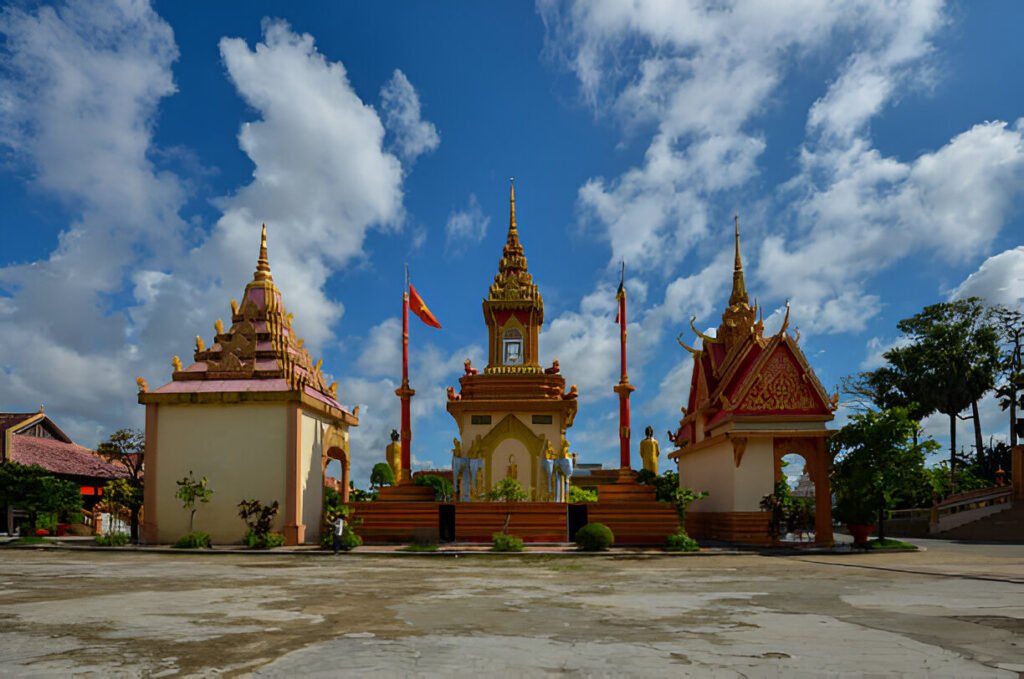Introduction:
Nestled amidst the colorful buildings and bustling streets of Battambang, Cambodia, is the iconic Central Market or Psar Nat. This heritage building, brimming with local products, embodies the rich culture and vibrant life of the city. The market is an absolute must-see for anyone wishing to immerse themselves in the authentic local culture. Built in the early 20th century during the colonial period, Psar Nat is not just a market, but also a symbol of Cambodia’s eventful past and resilient spirit.
Unraveling the Charm of Psar Nat: A Hub of Local Products
The true beauty of Psar Nat is its bustling and energetic nature. As you wander through the myriad of stalls, you are instantly enveloped by the tantalizing aromas of local spices, the vibrant colors of fresh fruits and vegetables, and the cries of vendors peddling everything from clothing to pottery. Each corner of the market is a treasure trove of local goods, allowing you to take a piece of Battambang home with you.
While the market is primarily known for its local produce and handicrafts, it also serves as a gastronomic playground. Vendors serve a plethora of local dishes and snacks, freshly prepared and packed with authentic Cambodian flavors. You can sample everything from traditional rice dishes to exotic fruits, all while reveling in the lively market atmosphere.
Embracing Heritage: The Allure of Central Market’s Historic Building
The Central Market is housed in a heritage building, adding an extra layer of charm to your shopping experience. The architecture is a combination of French and Cambodian influences, with a unique structure resembling a ship riding the waves. This striking design stands as a testament to the city’s colonial history and provides visitors with a glimpse into Battambang’s intricate past.
As you stroll through the market, take a moment to appreciate its architectural beauty. From the high ceilings and rounded archways to the finely wrought ironwork, every detail of the building is steeped in history. The market is not just a place for transactions, but also a living monument, breathing with the stories of the people who have passed through its corridors over the years.
Things to Do:
Psar Nat provides countless opportunities for exploration and discovery. You can spend hours browsing through the stalls, haggling over prices, and uncovering unique finds. Don’t miss out on the delicious street food, where you can taste local specialties like “num krok”, a coconut rice pancake, or “lop”, a traditional Khmer dessert.
If you’re looking to immerse yourself in the local culture, participating in a cooking class is a great option. Many vendors offer classes where you can learn how to prepare traditional Cambodian dishes using ingredients bought directly from the market.
Local Tips:
The best time to visit Psar Nat is early in the morning when the market is buzzing with activity. Don’t forget to wear comfortable clothes and shoes as the market can get quite crowded. Remember to haggle respectfully as it is a common practice. Also, carrying some cash is advisable since many vendors do not accept cards.
How to Get There:
Psar Nat is located in the heart of Battambang and is easily accessible by tuk-tuk, bicycle or on foot if you’re staying nearby. It takes approximately 30 minutes to drive from the Battambang Airport.
Nearby Attractions:
After your visit to Psar Nat, you can explore other local attractions like Sangker River, Wat Phiphetaram, or the Battambang Museum.
Conclusion:
Indeed, a visit to Psar Nat is an unforgettable journey into the heart of Cambodian culture. From the local products that fill its stalls to the historic architecture that houses them, every aspect of the Central Market is a testament to the rich history and vibrant spirit of Battambang. So, whether you’re a food lover, a history buff, or a curious traveler, Psar Nat promises an experience filled with discovery, authenticity, and pure Cambodian charm. Don’t miss the chance to immerse yourself in this vibrant market, and take home not just souvenirs but also cherished memories of a unique cultural encounter.




